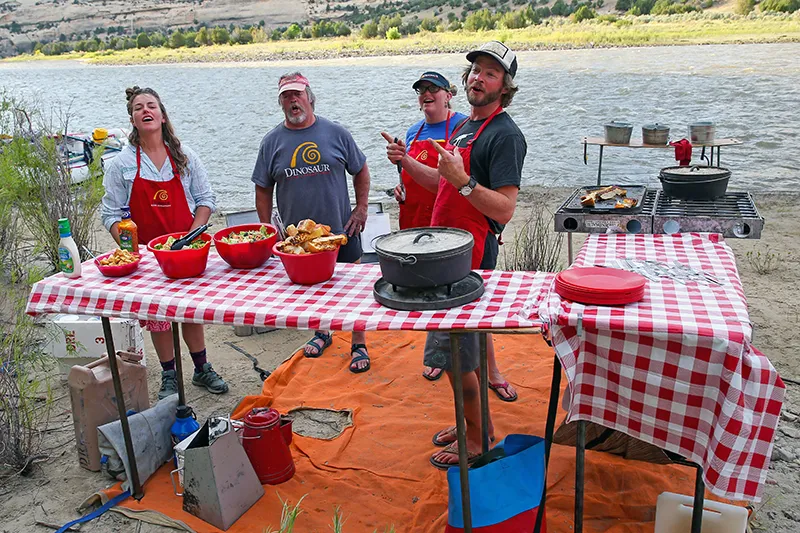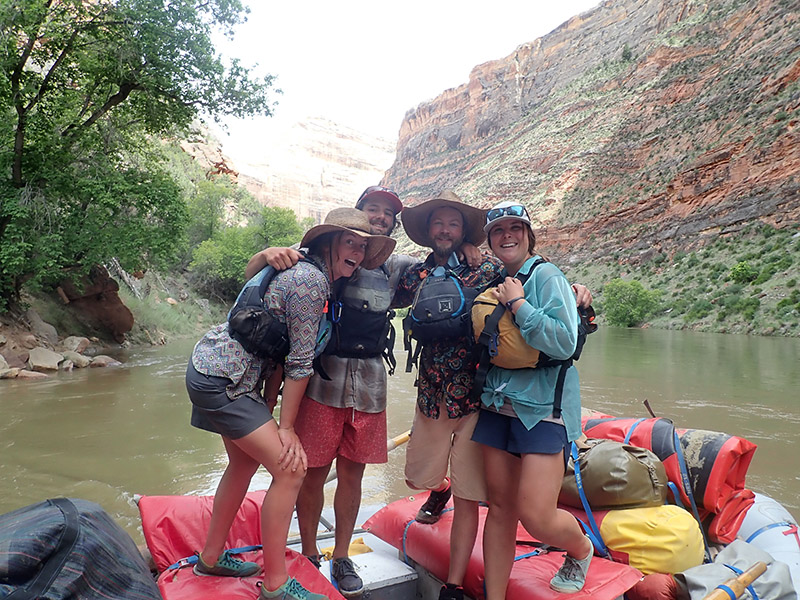Whitewater Rafting Safety Tips:
For one day or five whitewater rafting is one of the best ways to cool off in the summer heat for people of all ages and experience levels. That’s right, everyone! In the last 30 years, rafting has grown out of its wild and risky days into a family friendly activity. The invention of new safety gear and a better understanding of whitewater has helped the industry mitigate the risks of rafting. On a guided rafting trip the staff will orient you with a solid safety speech at the put in before launching on your one day or multi day river adventure. Whether it is a Utah one day raft trip on the Green River below Flaming Gorge or a 4 or 5 day white water adventure on the Green River or Yampa River through Dinosaur National Monument keep in mind you are potentially far from advanced help. Your guides are trained, certified and licensed but some injuries are beyond their medical training. Being mindful of your actions and thinking safe are key on a river rafting trip. Here are the basic measures you should take for every whitewater trip.
- Wear a properly fitting PFD
PFD’s, or life jackets, are the most important piece of equipment in white water rafting. Yes, even more vital than the boat, paddles, or guide. It is a hard rule: do not go on river without a PFD. Unlike lakes or oceans, river water churns chaotically in rapids. Eddies form confusing whirlpools that suck straight down, diagonal waves kicking towards canyon walls, and holes circulate water on themselves creating stationary pockets of water within a system of movement. Fortunately, a snug PFD will remove your need to navigate through this chaos, bringing you thoughtlessly to the surface
The vest should be tight against your chest and shoulders with all the buckles clipped. It shouldn’t come above your ears when you tug on the lapels. The jacket will loosen up over time and when its wet, so be sure to tug on your straps throughout the day and have a guide check that its fitted correctly.
- Be mindful
The majority of river trip injuries happen on shore not on the river. Be aware of your movements getting on and off the boats and at camp, hiking stops or lunch. It’s easy to twist an ankle, accidentally slice your hand on a dinner knife, or get a burn from boiling water. Slow yourself down, the river isn’t a race. It will save a lot of havoc if you take a breath before swirling around with a knife in your hand. Also, remember that drugs and alcohol decrease your body awareness and increase the potentially for a clumsy accident. The best way to combat shoreline injuries is simple, pay attention.
- Dress to the day
Temperature injuries are some of the most common on the river. In the spring, cold air combined with cold water creates a very real hypothermia threat; and in the summer, the reflective water doubles your sun exposure, increasing the risk for heat stroke. Make sure you check the weather forecast for a general idea of what you should be prepared for going into your trip. If its spring, bring an extra fleece, rain jacket and pants to help fend off the splashing cold water. In the summer, bring a brimmed hat, sunglasses, and even lightweight long sleeve shirts and pants for sun protection. In both cases, make sure you are hydrated and well nourished, fulling your body properly helps give it the strength you need for thermoregulation.
- Swim Properly
Similar to the proper use of a life jacket, swimming correctly in the river can help you conserve energy and avoid unnecessary risk. Use the defensive swimming position, floating on your back, looking downstream with your toes out of the water. Although it is an instinct to stop your motion by standing up, this is one of the more dangerous moves on the river. The water is stronger than you, and stopping your momentum is unlikely. It’s best to swim actively towards a raft or use the “noes and toes” defensive swimming position. Remember not to panic, the rapid won’t go on forever.
- Speak Up
Much of rafting safety is in your control. Guides are doing everything they can to keep you safe, but a large portion is in your hands. If you are uncomfortable with going on a certain section of a hike or don’t want to take an inflatable kayak down a rapid, that’s okay! Just let a guide know that they will help you. The guides are there to keep you safe. Even if you are cold, hot, thirsty or have a minor cut, let someone know. It’s much easier to combat many small problems than one big one.
Rafting safely is all about small actions that prevent large catastrophes. Don’t skimp on the easy stuff and have fun!


